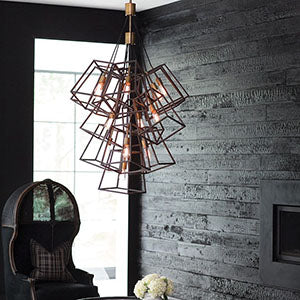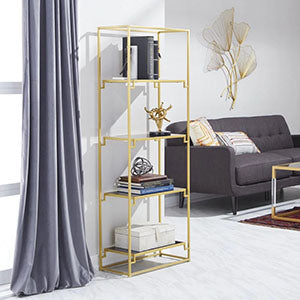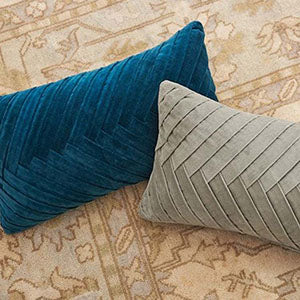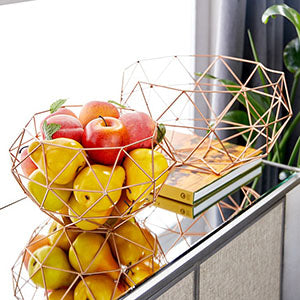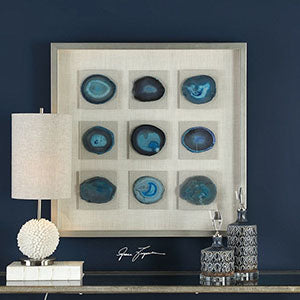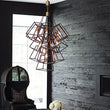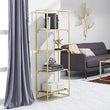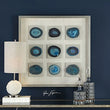Style & Design
7 Decorating Tips That Bring Big Style to Small Rooms
Small spaces can perplex even the boldest DIY home designer. It's tough finding the right décor balance in tight spaces. Or, you play it safe and end up with a ho-hum room. But don't shut the door on this design challenge—you can deliver big style to small spaces with the help of these 7 tips and strategies.
1. Save Space with Strategic Lighting
In small rooms, you need to bring the lighting up off the floor. Chandeliers and pendant lights are excellent options that add big style. Consider adding a crystal starburst chandelier—a glamorous style isn't overpowering because of the clear crystals. Or add color to low-light rooms with a pendant or cluster of pendants featuring vibrant glass shades.

In small bedrooms and offices, wall sconces are excellent space savers. You can install them above the headboard and forego the need for one side table. Push the bed against the wall, and add a narrow side table to the other side for books and a plant or other accents.
In small kitchens or offices where task lighting is critical, combine recessed lights with undercabinet lighting. You'll have enough light for food prep or paperwork while maintaining an open feel in the space.
More lighting ideas for small spaces:
- Simple pendants with an airy cage design or a colorful glass shade
- Swing-arm wall sconces beside reading chairs
- Slim torchiere floor lamps that reflect ambient light off the ceiling
- Chic flush mount fixtures crafted with bright polished nickel and glass (clear, opal, etched, or seeded)

2. Use Mirrors to Enlarge the Space
Mirrors help reflect light around a room, adding welcome spaciousness. Consider placing a large leaning mirror against the wall opposite the door or a window, or hang a full-length mirror on a closet door. A mirror with a border in bright brass, copper, or gold foils adds a sunny warmth. Alternatively, you can create a mirror gallery wall with mirrors of different sizes and shapes, and with different style frames for a refreshingly eclectic look.

3. Feature Multi-Purpose Elements
When possible, choose furniture that pulls double duty as storage space. For example, a coffee table can store extra pillows and blankets. A tufted storage bench at the end of your bed provides a place to sit down and get ready for the day, and space to hide away winter sweaters. Decorative wall ladders and shelves also provide additional storage space and style, with a relatively small footprint.
4. Make Bold Choices
Add one or two show-stopping design elements that are related to the purpose of the room. Big ideas for small spaces:
Small office
Make a striking desk and chair the focal point of the space. A wood and chalkboard drafting table provides a rustic elegance, while a chic mirrored desk offers a feeling of spaciousness.
Small bedroom
An upholstered headboard in a bright color provides drama without taking up much space. Or, add a leaning ladder shelf to your bedroom for folded blankets in a mix of vibrant colors—a chic storage option.

Small living room
A mid-century modern cabinet with a light wood finish provides storage and display space for photographs, sculptures, and other decorative accents. Alternatively, add glam style to your living room with a bold shag area rug or a big collection of shag throw pillows in bright colors.
5. Embrace Colorful Elements
People mistakenly believe white (or off-white) is the only choice for small room wall paint. While light walls and furnishings can make spaces appear larger, a white monochrome palette can all-too-easily become monotone and boring. Instead, add a vibrant accent wall in yellow or salmon pink. You can even choose a dark color, such as midnight blue, dark teal, or slate gray—the contrast can actually make the rest of the space feel larger in comparison.
If you opt for off-white or pale neutrals for your walls and furniture, add liveliness with colorful accents. Throw pillows and blankets in bright hues and prints are the easiest way to add pops of color. As a bonus, they're super simple to swap out when you're ready for a change. You can feature a small piece of furniture, such as a chair, bench, or ottoman in a vibrant color. Wall art is another effective way to add color. Look for bright landscapes, colorful prints, or metallic wall sculptures in polished copper, brass, and gold finishes.
6. Pay Attention to Proportions
That overstuffed couch will appear outsized in a small room, as will a large-scale chandelier. The first step is deciding the must-haves for the space. You'll need a bed in your bedroom, of course, but do you need a California King? How much seating do you need in the living room so everyone can sit comfortably for conversation or binge-watching?
Once you're clear on the necessary elements, measure the space and start adding the most essential furnishings first. For example, a narrow den may fit two armchairs, but feel crunched for space with the addition of a coffee table. Instead, opt for a large accent table between the chairs with room enough for a lamp, books, and mugs of coffee or tea. For extra seating, add soft ottomans or a bench along one wall or under a window.
Pro-tip: Cut large pieces of craft paper into the dimensions and approximate shape of your dream furniture. Seeing the footprint will help clarify what suits the space—and what doesn't.
7. Keep the Footprint Clear of Clutter
This is a last, but not least tip. Make an effort to keep small, high-traffic rooms free from clutter. Piles of mail on the desk, storage boxes in a corner, or unfolded laundry on a chair make small spaces feel smaller.
Pro-tip: Spend 10 to 15 minutes a day tidying up and your small space will feel perfectly inviting and cozy—according to your design.

